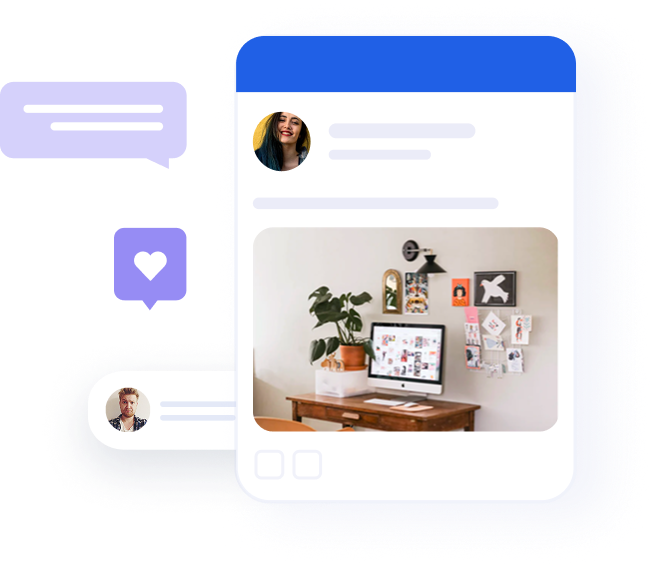
How to build a lead qualification framework
Table of contents
Whether you’re pursuing an inbound or outbound marketing strategy, lead generation is a constant struggle. In fact, 37% of B2B marketers rank it as their number one challenge. Nestled within that challenge is an even more daunting task: finding enough qualified leads.
Any good B2B marketing campaign will attract the attention and leads but at different stages of the funnel. However, not all leads are born equal – some will never be in a position to become a customer, while others are just not ready, yet.
This is very common in the B2B marketing and sales funnel. So, what we all want are qualified leads who have intent, budget, and are authorized to make purchasing decisions. To find them, you need a lead qualification framework to screen them out in a systematic way. Here’s how to build one.
What is the lead qualification process?
Lead qualification is the process of sifting through your leads, manually or in an automated fashion, to determine which ones are likely to make a purchase (and are therefore worth spending sales time and resources on) and which ones are not. If a lead wants what you’re selling (intent) and can close a deal (authority+budget)), they can be qualified and passed along to sales.
B2B sellers can communicate directly with the leads or analyze their existing customer data to uncover this information. A lead qualification framework is a formalized process for making these determinations.

What are qualified leads?
We touched upon this but a qualified lead can mean more than one thing for different funnel stages. There are several different types of qualified leads:
- Marketing Qualified Leads (MQL): There are almost as many MQL definitions as there are MarTech solutions. However, an MQL is most commonly defined as a contact that shows signs of interest appropriate to the top of the sales funnel stage, and based on their firmographic data (company size, job title, etc.) could possibly purchase the service or product being offered.
- Sales Qualified Leads (SQL): Usually, SQLs are MQLs that have also gone through a manual qualification process by a member of the sales team. If sales consider the lead not only qualified but a possible customer they will add an “Opportunity” to the SQL.
- Product Qualified Leads (PQL): Engages with your product (via demo or free trial) in a way that indicates purchasing intent.
For most B2B marketers’ purposes, the first two categories are the most important, but some may find it helpful to treat PQLs as separate from SQLs. The purpose of qualification is to separate the qualified leads from the unqualified and then determine which teams (marketing or sales) need to follow up with the qualified ones.

Recommended for further reading
What is a lead qualification framework, and how does it work?
A lead qualification framework is a formalized, consistent set of procedures for determining which leads to qualify. By running each lead through the framework, you can make a data-driven decision about the best course of action to take with them.
Direct engagement with a lead can be one of the most effective ways to gauge their intent. You can do this by asking your leads qualifying questions that address the specific criteria that define if they are promising or not. For example:
- What is the problem that you hope our product will solve?
- What is your budget for this project?
- Why are you moving on from your previous solution?
- Within your organization, who will make the final purchasing decision?
That said, you will often want to qualify leads before you have a chance to engage them in this kind of dialogue. For those leads, you’ll need to find ways to approach the answers to your qualifying questions indirectly.
Most lead qualification frameworks use a scoring system to rank leads based on the currently available data, with a minimum point threshold for separating qualified vs. unqualified leads. Lead scoring works by assigning points to a lead when they show any positive signs of making a purchase.
These signs can be inferred from implicit sources (behavior, meta-data) or explicit sources (verified demographic information, form submissions). It’s incumbent on B2B sellers to develop a point system and threshold that makes sense for their business.
Examples of lead qualification frameworks
While every business is unique, you don’t have to reinvent the wheel for everything. There are existing lead qualification frameworks that many B2B companies can adapt to their own needs. For the most part, these frameworks are defined by how they phrase and prioritize their qualifying questions. Here are three of the best-known frameworks.
BANT
Developed by IBM in the 1960s, the BANT framework seeks to establish four criteria for a lead:
- Budget – do they have the funds for this purchase?
- Authority – is your contact able to sign off on this purchase?
- Need – does the lead have a problem that this purchase would solve?
- Timeline – when is an actual purchase likely to happen?
Advantages: BANT is fast and easy to learn.
Disadvantages: BANT can’t always keep up with how today’s B2B sales involve multiple decision-makers.
CHAMP
Designed to improve upon BANT, CHAMP takes a customer-centric approach that prioritizes their pain points and accommodates complex decision-making structures.
Here, CH stands for the lead’s business challenges. A is still Authority, but the CHAMP framework encourages working constructively with low-level contacts. M is Money (the same as the B in BANT). P stands for Prioritization, which asks how much of a priority this purchase is for the lead’s organization.
Advantages: Takes the buyer’s needs more fully into account.
Disadvantages: Following CHAMP can slow down your sales cycle.
GPCTBA/C&I
HubSpot created GPCTBA/C&I as an attempt to improve on BANT. The unwieldy acronym stands for Goals, Plans, Challenges, Timeline, Budget, Authority, Consequences, and Implications. Some of these refer to qualifying questions we should be familiar with by now, but this framework introduces several new ones.
G refers to the overall goal of the lead’s organization, and P is all about the concrete actions they’re taking to achieve them. The C & I pairing invites a look at the consequences of the lead failing to meet their goals and the benefits that can be achieved if they meet them.
Advantages: Provides detailed insights into how the lead thinks and operates.
Disadvantages: Small teams may find it hard to implement.
How to build a lead qualification framework
Whether using an existing lead qualification framework or your own version, you’ve still got to find a way to implement it. Here are seven easy steps to follow that will help you get a basic lead qualification framework up and running.
1. Create buyer profiles
Leads who fall well outside of your target market can usually be safely disqualified. You should be able to use demographic and business information to identify potential leads. This data can be further developed into buyer personas that represent specific types of individuals you might interact with.
2. Create a lead scoring model
Using historical customer data and insights from your sales and marketing teams, devise a scoring system for assigning points to leads based on any indications that they’re serious about making a purchase.

3. Distinguish between interest and intent
Interest and intent can both be promising signs, but they really aren’t the same thing. Most of the time, this difference is what separates the MQLs from the SQLs. Engaging with your content shows interest; registering for a free product trial shows intent. Both should be nurtured, but each in the appropriate way.
4. Determine if your products or services are needed
Ultimately, the thing you’re selling should either solve a problem the lead is having or help propel them toward their greater organizational goals. Make a candid assessment of whether or not you and the lead are a good fit for each other.
5. Understand the decision-making process
The typical B2B purchase involves six to ten people with final decision-making authority. Understanding who these individuals are, what their priorities are, and how their needs might conflict or intersect is vital to landing high-stakes B2B deals in today’s purchasing environment. Your qualification process must ensure that you end up directing your efforts to the right people.
6. Ask the right questions
Effectively executing your framework depends on getting accurate answers to your qualifying questions. When data alone cannot provide the answers, you should try to reach out directly – but you want to ensure you’re asking the right questions, in the right way, to fill in the gaps in your knowledge.
7. Capture information correctly
It’s great when you can get a lead to fill out a form that straightforwardly asks for the information you want, but when that doesn’t work, you might have to get clever. Quizzes, games, calculators, and other forms of interactive content can motivate leads to provide the data you need to complete your picture.
Conclusion
Your sales team may be clamoring for more leads, but unless you have a way to qualify them, they might end up pitching to the wrong people while the good prospects go unacknowledged and drift out of your sales funnel. A lead qualification framework makes sure you’re following a reliable, data-driven process for deciding which leads to pursue.
It pays to keep in mind that the places where you find new leads, especially social media, are excellent data sources for qualification purposes. With the right social media marketing and management tools, you can generate leads and collect this data simultaneously.




